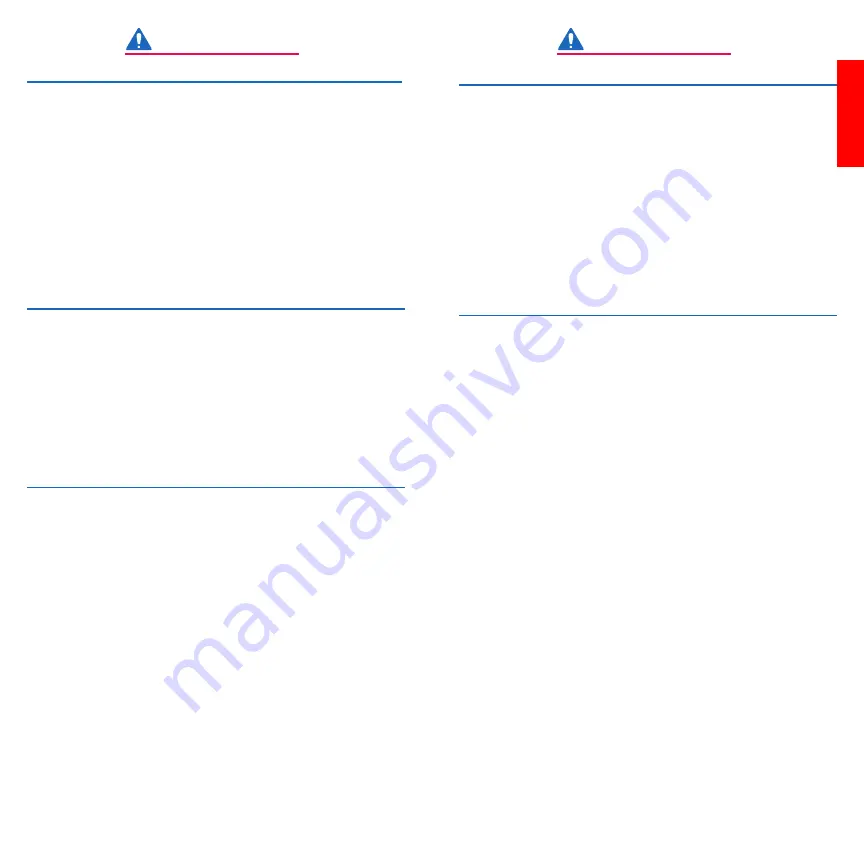
4
5
Location Warnings
– cont.
Rear-facing, Forward-facing, and Booster Use
suitable for a particular seating position is to check
for a tight installation. If the child restraint cannot be
properly installed,
DO NOT
use the child restraint.
Consult vehicle owner’s manual, try a different seating
location, or call Evenflo for further assistance.
•
ONLY
use this child restraint on
forward-facing
vehicle seats
.
DO NOT
use this restraint with vehicle
seats that face the rear or side.
•
ONLY
use this child restraint on vehicle seats with
backs that lock into place.
Premature Infants
Rear-facing, Forward-facing, and Booster Use
•
DO NOT
use this or any child restraint with a
premature infant until after consulting your doctor.
Premature infants may have difficulty breathing when
in a seated or semi-reclined position. Using additional
padding or pillows behind the infant’s head or failing
to properly recline the child restraint could increase
the child’s risk of serious injury or death.
Rear-facing Position Warnings
Rear-facing Use Only
•
DO NOT
use this child restraint rear-facing in a vehicle
equipped with lap belts that only lock during a sudden
stop or crash (emergency locking retractor – ELR). You
must use a seating location with a locking seat belt.
Check your vehicle owner’s manual to see if you have
lap belts with ELRs.
• When using this restraint rear-facing,
DO NOT
loosen
the vehicle seat belt to provide more leg room, as this
will prevent the child restraint from protecting the
child.
• Fold-down armrests could pose a hazard to a rear-
facing child in certain types of collisions. Consult your
vehicle owner’s manual before installing any rear-
facing child restraint in front of a fold-down armrest.
•
NEVER
turn a child restraint forward-facing with an
infant who weighs less than 10 kg (22 lbs) or is less
than one year of age. Crash forces may cause serious
injury or death.
Rear-facing Position Warnings
Rear-facing Use Only
•
NEVER
use
Recline Position #2
or
Recline Position #3
when using this child restraint rear-facing. Use
ONLY
Recline Position #1
.
•
DO NOT
use the tether strap when the child restraint
is in the rear-facing position.
• The headrest on the vehicle seat that the child faces
when sitting in the rear-facing mode should be placed
in the lowest position. The vehicle seat back that the
child faces must be fully padded and free of any hard
objects.
Forward-facing Position Warnings
Forward-facing and Booster Use Only
• When using the harness straps to secure a child who
is more than 18 kg (40 lbs),
NEVER
place the child
restraint in
Recline Position #2
. Use
ONLY
Recline
Position #
3.
•
DO NOT
use
Recline Position #1
or
Recline Position #2
when using this child restraint in Booster Mode. Use
ONLY
Recline Position #3
.
•
DO NOT
use the lower anchors of the child restraint
anchorage system (LATCH system) to attach this child
restraint when restraining a child weighing more than
18 kg (40 lbs) with the internal harnesses of the child
restraint.
• Install this child restraint with a vehicle seat belt (
NOT
lower anchor connectors) when using the restraint’s
internal harnesses to secure a child who weighs more
than 18 kg (40 lbs).
• If the child weighs more than 29.4 kg (65 lbs)
OR
their shoulders are above the highest harness level,
you
MUST
use this child restraint as a booster (p. 44).
• Adjust, or remove, the
vehicle
headrest,
in the seat
where the child restraint is to be installed
, so that
the back of the child restraint rests against the vehicle
seat back.
• The headrest on the vehicle seat in front of the child
should be put in its lowest position. The vehicle seat
back that the child faces must be fully padded and
free of any hard objects.
WARNING
WARNING
Important





































